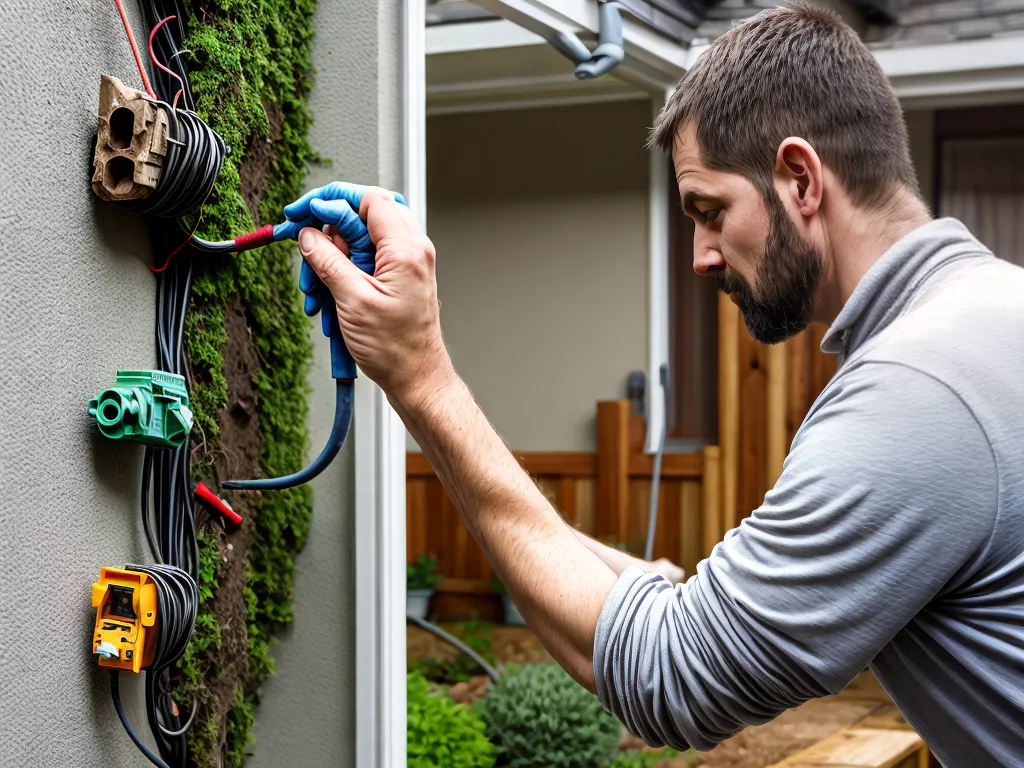
Exposed electrical wiring in your garden can be hazardous. Not only is it an eyesore, but it also poses safety risks like electrocution and electrical fires. Thankfully, you can easily and cheaply insulate exposed garden wiring in a few simple steps.
Gather the Necessary Materials
Insulating exposed garden wiring is an easy DIY project. You likely already have the few materials needed:
-
Electrical tape - The tape helps waterproof and insulate wires. Get standard black electrical tape, which is versatile, inexpensive, and available at any hardware store.
-
Wire nuts - These are caps that twist onto wire ends to cover exposed copper. Make sure to get wire nuts properly sized for the gauge of your wiring.
-
Conduit or hose - For running wiring underground, use conduit to protect and hide cables. Garden hose also works in a pinch.
-
Zip ties - Use zip ties to neatly attach and organize any surface-mounted wires.
All of the above materials can be purchased for under $10 total. Avoid cheaping out on electrical tape or wire nuts - spend a couple extra dollars to get durable, high-quality products.
Shut Off Power at Main Source
Before handling any wires, shut off the power at the main circuit breaker panel. Make sure the power is off by testing with a multimeter or voltage tester. Working on live wiring can result in severe shock or electrocution. Take precautions even if you think the circuit is off.
Replace Any Damaged Wiring
Inspect the exposed wiring for damage like cracked insulation or corrosion. Any damaged or frayed wiring should be replaced. Damaged wiring poses a serious safety hazard and risk of short circuit and electrical fire if not addressed.
Purchase new wiring of the same gauge size to replace any damaged wires. Carefully cut back and splice new wiring using wire nuts. Make sure connections are secure with no copper exposed.
Waterproof Connections
Outdoor connections are vulnerable to moisture. To waterproof:
-
Tightly wrap each individual wire nut connection with electrical tape.
-
Further wrap all wires together in more tape to form a "tail". This protects the whole length of the wire.
-
Seal any wire nut tips exposed through the tape with extra dabs of electrical tape.
Properly taping connections forms a water-resistant barrier.
Run Wires Through Conduit or Hose
For the cleanest look, run wires underground through conduit or garden hose. This also protects against damage. Dig a narrow trench about 6 inches deep and lay conduit or hose. Pull wired connections through using string or fish tape.
Conduit provides maximum protection, but plain garden hose works for running short distances on a budget. Avoid shallow depths where wiring may get accidentally dug up or damaged by lawn tools.
Neatly Attach Surface-Mounted Wires
Any wiring remaining above ground should be neatly attached. Use zip ties, clamps, or clips to firmly secure wires to walls, posts, or other solid surfaces.
-
Space attachments every 1-2 feet along the wire run.
-
Avoid tight bends or kinks that may damage wiring.
-
Keep wires clear of sprinklers and foot traffic that may cause damage.
Proper mounting keeps wiring organized, protected, and less visible.
Restore Power and Test
With all wiring insulated and reconnected, carefully restore power at the main breaker panel. At this point it is crucial to test that:
-
None of the newly worked-on wires are live - Use a non-contact voltage tester to double check wires have no electricity.
-
Connected devices function properly - Test lights, outlets, and anything else on the circuits to ensure proper operation.
If you identify any remaining issues, such as continued exposed live wires, immediately shut off power and troubleshoot the problem. Never leave exposed live wires unattended.
Safety Tips
When working with electrical wiring, remember:
-
Never handle wires when power is live - always shut off power at the breaker panel.
-
Avoid working on wiring if rain or thunderstorms are possible.
-
Wear rubber-soled shoes and work gloves for insulation.
-
Never rush or take shortcuts - carefully follow proper wiring procedures.
-
If unsure about any wiring task, contact a professional electrician.
Following basic safety practices reduces the risk of electric shock and other hazards. Take your time and focus on doing the job right.
Insulating exposed garden wiring is an easy, inexpensive way to protect your garden's beauty and safety. With a few common tools and materials, you can take care of this issue yourself in very little time. Just be sure to shut off power, make watertight connections, and neatly run and mount wires.